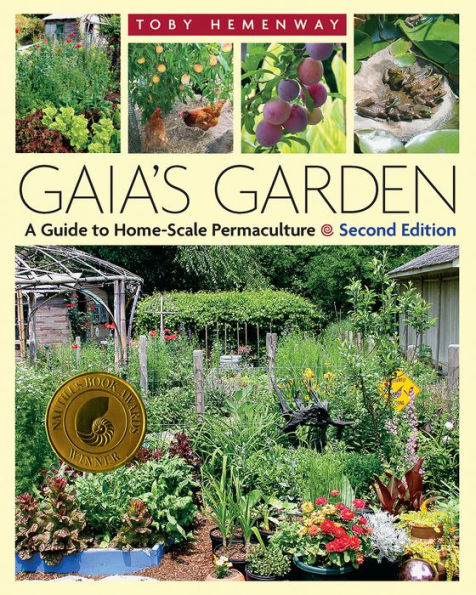Gaia's Garden, Second Edition: A Guide to Home-Scale Permaculture / Edition 2 available in Paperback

Gaia's Garden, Second Edition: A Guide to Home-Scale Permaculture / Edition 2
- ISBN-10:
- 1603580298
- ISBN-13:
- 9781603580298
- Pub. Date:
- 05/19/2009
- Publisher:
- Chelsea Green Publishing
- ISBN-10:
- 1603580298
- ISBN-13:
- 9781603580298
- Pub. Date:
- 05/19/2009
- Publisher:
- Chelsea Green Publishing

Gaia's Garden, Second Edition: A Guide to Home-Scale Permaculture / Edition 2
Paperback

Product Details
| ISBN-13: | 9781603580298 |
|---|---|
| Publisher: | Chelsea Green Publishing |
| Publication date: | 05/19/2009 |
| Pages: | 328 |
| Sales rank: | 16,109 |
| Product dimensions: | 7.90(w) x 9.90(h) x 0.60(d) |
About the Author
Customer Reviews
Explore More Items
Relive the sensuality, the romance, and the drama of Fifty Shades Freed—the love story that enthralled millions of readers around the world—through the thoughts, reflections, and dreams of
E L James revisits the world of Fifty Shades with a deeper and darker take on the love story that has enthralled millions of readers around the globe.
Their scorching, sensual affair ended in
Daunted by the singular tastes and dark secrets of the beautiful, tormented young entrepreneur Christian Grey, Anastasia Steele has broken off their relationship to start a new career with a Seattle
Look for E L James’ passionate new
DRAMA DE CINCUENTA SOMBRAS LIBERADAS
A TRAVÉS DE LOS PENSAMIENTOS Y SUEÑOS
DE CHRISTIAN GREY.
E. L. James regresa, con una mirada más
Enjoy a thriving, fragrant herb garden and use your harvest to bring beauty, flavor, and health to your everyday life. Tammi Hartung provides in-depth profiles of 101 popular herbs, including
Stretch the resources of your small backyard garden further than ever before, without devoting hundreds of hours to canning! This informative and inspiring guide shows you not only how to construct
